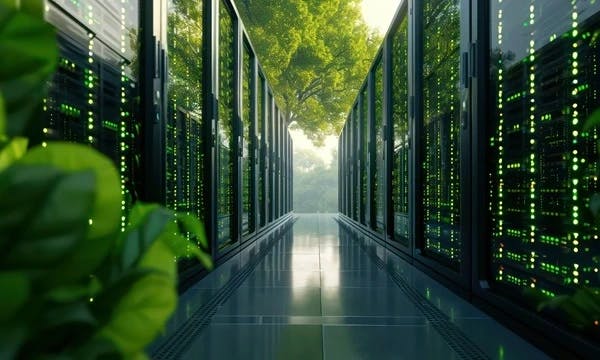Over the past few years, the sale of electric vehicles (EVs) has increased and original equipment manufacturers (OEMs) are releasing more EV models. However, with innovation speeding up, EV charging infrastructure is not keeping up with demand.
Despite the charging infrastructure lagging, e-mobility adoption has been better than anticipated on a global level. The global charging infrastructure market is valued at $6.4 billion in 2023 and is expected to cross $121. billion by 2030..
“Traditional OEMs are struggling to maintain a balance between their legacy fleet of products and the transition toward electrification,” says Siba Satapathy, Executive Vice President at HCLTech.
The disruption and transformation of this section of the transportation industry is driven in large part to meet decarbonization efforts and reduce the impact of climate change. Some decarbonization solutions will result in immediate emissions reductions, but others will take a longer time to implement.
While additional research and development will be needed to further improve certain solutions and reduce costs, progress and demonstration are well underway in the e-mobility sector. It is important to act now on decarbonization to implement near-term and long-term solutions to reduce emissions from transportation.
Current charging infrastructure landscape
The current charging infrastructure for EVs can be primarily broken up into four different segments. The first segment is made up of charging stations with AC charging that is the most common and found in residential, commercial and public areas. These stations typically offer Level 1 and Level 2 charging options.
The next segment is by vehicle type. This segment includes battery electric vehicles (BEVs) that are powered by high-capacity lithium-ion batteries, which store electrical energy and assist in reducing operating costs because of lower maintenance requirements and elimination of fuel expenses.
The third segment is installation type, which carries the largest market share and includes portable chargers and fixed chargers. These are widely available for various charging levels, such as Level 2 AC charging and Level 3 DC fast charging, that cater to different vehicle charging needs.
The last segment for the current charging infrastructure is charging level. Charging Level 2 — which refers to a medium-speed charging option for EVs — dominates the overall market. They are designed to provide a balance between convenience and charging speed, making them suitable for EV owners who require quicker recharging times during the day.
Charging infrastructure not keeping pace
While OEMs and automotive companies accelerate their production development and GTM, charging infrastructure hasn’t been able to keep pace with the demand. There are several factors contributing to this, according to Satapathy, with government policies and incentives being the most prominent factors.
Another reason is that the industry is quite fragmented. Several players are vying for a piece of the charging infrastructure action and OEMs like Tesla and BYD have a fully integrated value stream model. While established energy device companies like ABB are investing in this sector, several start-up companies want to capture a portion of the market as well.
Furthermore, there is a shortage of key materials, such as microchips and batteries, a lack of a robust power grid and a lack of high-power chargers. To date, fast and ultra-fast EV chargers can only be installed where enough grid power is available. This leaves most roads without viable or cost-effective EV fast charging solutions, creating high entrance barriers for EV access in those areas.
Lastly, the cost of the technology and installation is another hinderance in the development of a strong charging infrastructure.
Addressing the charging challenge
Satapathy mentions a few ways that these issues can be addressed starting with Dynamic Charging at the distribution level, where charging station can manage local peaks in demand or renewable supply. By co-locating rooftop solar generation and EV charging, an opportunity is provided to mitigate the impacts of both technologies on the local grid.
Battery swapping stations along with track and trace platforms for predictability and efficiency can also help address the challenges associated with the charging infrastructure. Additionally, utility companies can authorize a third party to install and operate charging stations within its license area after suitable locational planning.
Establishing active charge control strategies, or “smart charging,” can help address these challenges. Advanced charging infrastructure — usually in buildings — is actively used by utilities or other third parties to control when charging occurs, like traditional demand response programs. By overcoming the charging challenges, the full potential of the EV market can be realized, while meeting the demand for e-mobility.
Accelerating decarbonization efforts with electrification and biofuels
The transportation sector contributes approximately 25% of all energy related greenhouse gas (GHG) emissions. A BEV — an electric engine powered by a large battery — emits70% less CO2 over its lifetime compared to an ICE (internal combustion engine) and 50% less compared to hybrid vehicles.
An increased adoption of e-mobility and BEVs will have a significant impact on decarbonization efforts.
In addition to passenger cars, another big source of CO2 in congested cities, are last-mile delivery vehicles, two wheelers and three wheelers. These segments can move to BEV with relative ease and will make a huge impact on GHG.
“Similarly, there is a significant increase in usage of biofuels especially in countries like India, Brazil and Indonesia where governments are rolling out subsidies and financial incentives,” says Satapathy.
“Increased usage and adoption of biofuel will also help in accelerating decarbonization,” he adds.
However, in the transportation industry, solving only one piece of the puzzle may not solve the problem.
“One has to look at the entire journey involving multi-modal transportation and ensure there is adoption of e-mobility across different segments,” continues Satapathy. “For example, the aerospace industry is rapidly investing into electric vertical take-off and landing [eVTOL] and large cities are promoting shared mobility and public transport systems, including offering e-bikes for last-mile connectivity.”
The automotive and e-mobility industries aren’t the only ones attempting to accelerate decarbonization efforts and become more sustainable. While there isn’t any one specific industry that organizations can take lessons from, most industries can benefit from a strong public-private partnership to help overcome the challenges related to the decarbonization and to help maneuver through evolving regulatory requirements.





